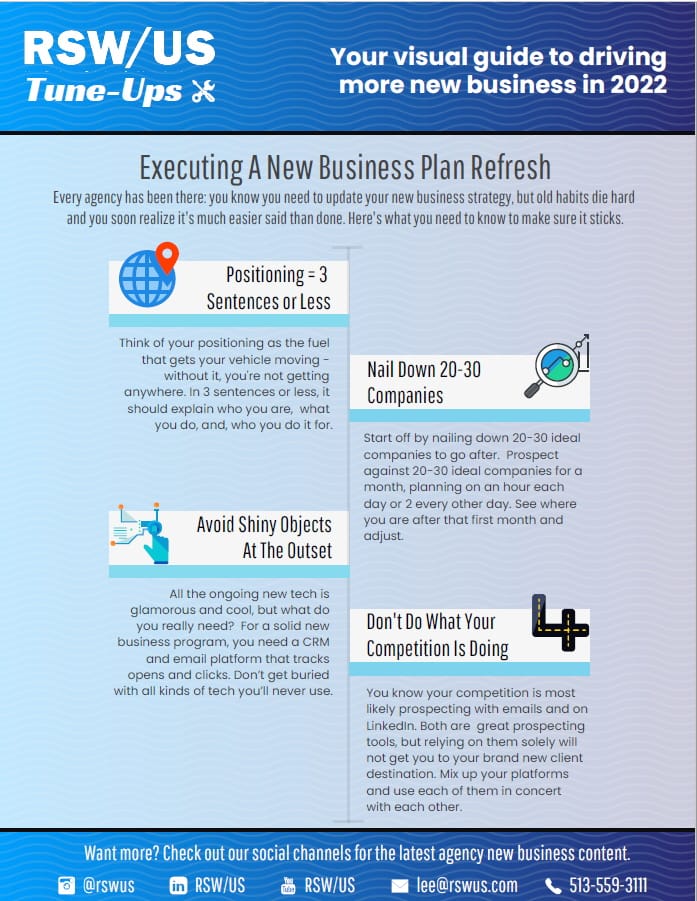One big business development challenge for ad agencies: Executing An Ad Agency New Business Refresh
We’re an outsourced ad agency business development firm that works specifically with ad agencies, marketing services firms, and PR firms to find better qualified new business opportunities and get you closer to close.
RSW/US is headquartered in Cincinnati, OH, with experts in lead generation, targeted prospect list building, and content creation driving our ad agency business development programs.
More about our advertising agency new business strategy and outsourced business development programs here.
Be sure to visit our YouTube channel and Agency New Business Blog for further insights.
Download this one-pager at the bottom of this post.
So two members of our RSW/US Marcom team, Steve Taggart and Bailey Kocent, created an ebook called RSW Tune-ups, a visual guide to driving more new business in 2022.
We’ll ultimately be releasing it in full, but we’re starting by releasing individual agency new business one-pagers, designed to cover different business development challenges advertising agencies are faced with.
Download the first, Building Awareness here, and the second, Targeting The Right Prospects, here.
Every agency has been there: you know you need to update your new business strategy, but old habits die hard and you soon realize it’s much easier said than done.
Here’s what you need to know to make sure it sticks and execute an ad agency new business refresh:

1. Positioning = 3 Sentences or Less
Think of your positioning as the fuel that gets your vehicle moving – without it, you’re not getting anywhere.
In 3 sentences or less, it should explain who you are, what you do, and, who you do it for.
Here’s a short video on avoiding the ad agency se of sameness in your positing: The Ad Agency Sea of Sameness – How To Steer Clear
2. Nail Down 20-30 Companies
Start off by nailing down 20-30 ideal companies to go after.
Prospect against 20-30 ideal companies for a month, planning on an hour each day or 2 every other day.
See where you are after that first month and adjust.
3. Avoid Shiny Objects At The Outset
All the ongoing new tech is glamorous and cool, but what do you really need?
For a solid new business program, you need a CRM and email platform that tracks opens and clicks.
Don’t get buried with all kinds of tech you’ll never use.
More content around avoiding those shiny objects: How To Add Value To Agency New Business Prospecting
4. Don’t Do What Your Competition Is Doing
You know your competition is most likely prospecting with emails and on LinkedIn.
Both are great prospecting tools, but relying on them solely will not get you to your brand new client destination.
Mix up your platforms and use each of them in concert with each other.
—————————————————————————————————————————
If you’re looking for a more effective business development strategy, email Lee McKnight Jr., VP of Sales at RSW/US at lee@rswus.com.
Learn more about our outsourced business development programs here.
Learn more about our process here.








